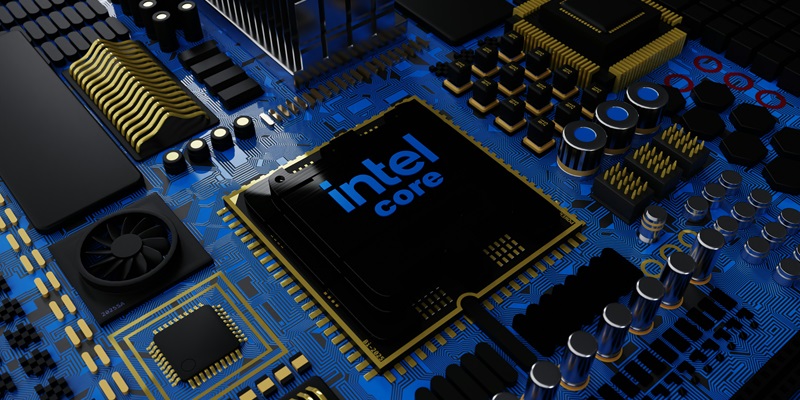Intel is gearing up to launch its next-generation Arrow Lake desktop CPU platform, which is expected to debut later this year. This anticipation is heightened by Intel’s recent struggles with its current Raptor Lake platform, leading many to hope Arrow Lake will address these issues effectively.
Arrow Lake Innovations
Arrow Lake introduces numerous advancements that mark a significant shift in Intel’s CPU technology. These advancements include a transition from Intel’s 10nm monolithic design (Intel 7) to the Intel 20A node, effectively scaling down to a ~2nm chip that incorporates backside power delivery. This move represents one of the biggest node shrinks in Intel’s history and aims to put Intel on par with or ahead of TSMC’s 3nm technology. Additionally, Arrow Lake adopts a new socket and tile-based design, making it more flexible and efficient.
Initial Performance Benchmarks
The first performance numbers for Arrow Lake were revealed via Geekbench. Although Geekbench isn’t the most reliable benchmark for gaming PCs, it’s currently the only available data point. The tested CPU, the Core Ultra 7 265KF, posted a single-core score of 3,219 and a multi-core score of 19,433. When compared to the Core i7-14700KF from the Raptor Lake lineup, which scores 3,005 in single-core and 19,595 in multi-core, the new chip shows a modest improvement in single-core performance (approximately 7%) but a slight decrease in multi-core performance. This regression in multi-core performance is partly due to Intel’s removal of hyper-threading in its new CPUs.
Design and Efficiency Improvements
The Arrow Lake chip features eight P-cores and 12 E-cores, identical to its predecessor in core count but lacking the additional threading capability, resulting in eight fewer threads overall. Despite the threading reduction, the scores are notably close to its predecessor, which could be interpreted as a positive given the constraints. One significant area of potential improvement for Arrow Lake lies in power efficiency. While we lack specific power consumption metrics from this test, if Arrow Lake can match or exceed Raptor Lake’s performance at significantly lower power consumption, it could win favor among users.
Arrow Lake’s clock speeds are listed as 3.9GHz base, which is 500MHz higher than the Core i7-14700KF, and a boost clock of 5.5GHz, which is 100MHz lower. Given the testing is on early hardware, these frequencies might not be final.
Comparative Analysis
Though these initial performance numbers for Arrow Lake seem underwhelming for an entirely new architecture with several new technological implementations, this is just an early glimpse. More comprehensive assessments will be necessary to draw definitive conclusions. In contrast, Apple’s M4 processor, built on TSMC’s 3nm process, demonstrates superior single-core performance at 3,665 but lags in multi-core scores due to its configuration of just ten cores (four performance cores and six efficiency cores). This comparison further highlights the strengths and potential weaknesses of Arrow Lake.
Future Outlook
Intel is preparing to unveil its next-generation Arrow Lake desktop CPU platform, anticipated to be released later this year. This upcoming launch generates significant buzz, particularly because of the challenges Intel has encountered with its current Raptor Lake platform. Many tech enthusiasts and industry insiders are eager to see if Arrow Lake can resolve the issues that have plagued its predecessor.
The Raptor Lake CPUs faced several setbacks, including performance inconsistencies and thermal throttling, which disappointed consumers and dented Intel’s reputation for producing reliable, high-performance processors. With the Arrow Lake platform, Intel aims to make a comeback by addressing these critical concerns and delivering a more robust and efficient experience.
Moreover, the Arrow Lake CPUs are expected to feature advanced architecture, high core counts, and improved power efficiency. Intel’s investment in innovative technology and design advancements is seen as pivotal in regaining its foothold in the competitive CPU market. As the tech world watches closely, the Arrow Lake launch could potentially redefine Intel’s standing and mark a new era of performance in desktop computing. The hope is that these improvements will silence critics and reestablish Intel’s prominence in the tech industry.

